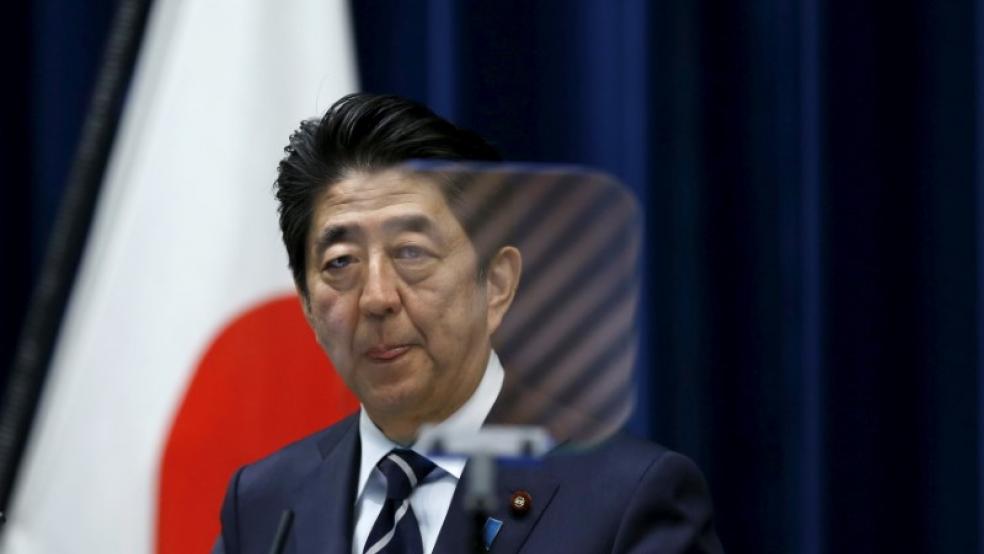(Reuters) - The salient fact in the Japan election wasn’t the big victory for Prime Minister Shinzo Abe or the record low voter turnout, but that it is all happening in a country with fewer and fewer people.
That demographic reality means that the reflationary economic policies of the Abenomics project now has more runway but perhaps still not enough power to get off the ground.Abe’s coalition’s victory with more than a two-thirds majority makes likely not only more expansionary monetary and fiscal policy in the next year, but smoothes the way for his likely victory for another term in September 2015.This ensures a fair try for the first two components of Abenomics: monetary policy to cheapen the yen and stimulate exports as well as creating inflation, and fiscal policy, including the delay of a consumption tax, to try to give the effort support.With fewer and aging people and little immigration, Japan’s ability to capitalize on this is in doubt, even if labor reforms to bring more women into the workforce eventually succeed.“Japan needs more people, not more debt, and not more money. An aging and declining population is reducing aggregate demand. A shrinking workforce is reducing Japan’s potential production. Fiscal stimulus cannot fix this,” economist Carl Weinberg of High Frequency Economics wrote in a note to clients.“Since demand falls faster than supply when both the population and the labor force go down together, deflation is inherent in this forecast, regardless of fiscal deficit spending or monetary conditions.”This view was reinforced by the Bank of Japan’s Tankan quarterly business conditions survey, which showed companies not only forecasting falling sales but falling prices also. It has proved extremely difficult to bring Japanese businesses and consumers out of a deflationary mindset.That’s perhaps in part because, though the BOJ has successfully driven prices up 2.9 percent from a year ago, this is a rise of just 0.9 percent when you strip out the effect of April’s consumption tax hike. Even worse, wages have not kept pace with even this mild inflation, dropping on an inflation-adjusted basis for the 16th straight month in October to stand 2.8 percent lower than a year before.So, while Abenomics can move its targets toward its goals, its ability to create a self-sustaining economic recovery is in doubt. Meanwhile Japan’s public debt position worsens, raising the stakes of the gamble.GLOBALIZATION AND THE CULT OF SHAREHOLDER VALUEOne of the other problems with Abenomics thus far is its puzzling failure to ignite an export-led revival. The thinking was that if you could lower the value of the yen, exporters would win market share at newly profitable levels. To take advantage of this they would invest in new equipment and capacity, hiring new workers in the process.Those capital expenditures and wages would circulate in the economy, raising economic growth and sustaining rising prices.That is not how it has worked out, at least so far. While the dollar now buys about 20 percent more yen than it did before talk of Abenomics began in 2013, exports have expanded at a far slower pace, forecast to be up 7 percent in November. Exporters have seen their margins fatten, but have yet to decide that argues for much higher production in Japan.“Put simply, one might say Abenomics has made exporters richer, but not yet busier,” Barclays economist Kyohei Morita wrote to clients.In part, this may be because Japanese industry quite sensibly decided long ago to diversify its manufacturing base, building plants elsewhere in the world. A Japanese executive, then, is not simply competing as a yen-based manufacturer. If he decides to try to up production in Japan, he may simply be shifting demand away from his other operations elsewhere, making them less profitable.Morita of Barclays observes that since 2002 despite wide swings in the value of the yen, the price tags of Japanese goods have hardly fluctuated, implying that prices are the result of a more globalized, highly integrated manufacturing sector.One other potential explanation for Japan’s failure to take advantage of the weak yen is the cult of shareholder value, a U.S. idea only slowly and fitfully imposed upon Japanese companies over the past 15 years.Believers in shareholder value maximization, the idea that a corporation’s sole aim is the creation of profit for owners, might argue that it is better for Japan, Inc. to take the cheap yen as a windfall, banking the now fatter margins while keeping capital expenditure at a minimum.If this can be done while giving out below-inflation raises, then so much the better, our globally educated Japanese manager might believe.Abenomics may well fail, but after the election it looks as if it will be given a robust test. (At the time of publication James Saft did not own any direct investments in securities mentioned in this article. He may be an owner indirectly as an investor in a fund. You can email him at jamessaft@jamessaft.com and find more columns at http://blogs.reuters.com/james-saft) (Editing by James Dalgleish)After election, Abenomics to fail fair test: James Saft

© Yuya Shino / Reuters



